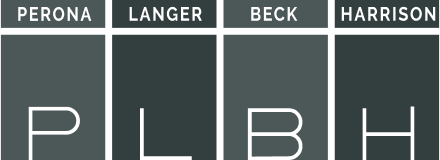
Neck and back injuries are among the most debilitating workplace injuries, often resulting from accidents, repetitive strain, or unsafe working conditions. Proving your employer’s responsibility is critical to securing workers’ compensation and ensuring you receive the care you need. Contact PLBH at (800) 435-7542 for a free legal consultation.
Common Causes of Workplace Neck and Back Injuries
Accidents Leading to Injuries
Neck and back injuries often result from sudden accidents, such as:
- Slip-and-fall incidents: Wet floors or poorly maintained walkways.
- Heavy lifting: Improper techniques or excessive loads.
- Vehicle accidents: For employees who drive as part of their job.
Repetitive Stress Injuries
Long-term wear and tear from repetitive movements or poor ergonomics can lead to conditions like:
- Herniated discs
- Chronic lower back pain
- Strain or stiffness in the neck
Unsafe Working Conditions
Inadequate training, lack of proper safety equipment, or failure to maintain a safe environment can also contribute to these injuries.
Steps to Take After a Neck or Back Injury
1. Seek Medical Attention Immediately
Prompt medical care is essential for both your health and your claim.
- Visit a healthcare provider and describe your job duties and how the injury occurred.
- Obtain detailed documentation of your diagnosis, treatment plan, and any work restrictions.
2. Report the Injury to Your Employer
Inform your employer about the injury as soon as possible. Include:
- The date, time, and location of the incident.
- Any contributing factors, such as unsafe conditions or inadequate equipment.
3. Document the Incident
A strong record strengthens your case. Collect the following:
- Photos or videos: Capture the accident site or any hazardous conditions.
- Witness statements: Coworkers who saw the incident can provide valuable testimony.
- Work logs: Note tasks performed leading up to the injury.
Proving Employer Responsibility
Employer Duties Under Workplace Safety Laws
Employers are required to maintain a safe work environment by:
- Providing proper training on equipment use and safety procedures.
- Supplying protective gear and ergonomic tools.
- Addressing workplace hazards promptly.
Failure to meet these obligations may establish employer negligence.
Key Evidence to Support Your Claim
To prove your injury is work-related, you’ll need:
- Medical records: Show the link between your injury and workplace conditions.
- Accident reports: Official documentation filed with your employer.
- Expert opinions: Testimony from medical or workplace safety professionals.
Overcoming Employer or Insurer Disputes
Employers or insurance companies may argue that your injury:
- Was caused by a pre-existing condition.
- Happened outside of work.
- Doesn’t require extensive treatment.
Strong evidence and legal representation can help counter these arguments.
Workers’ Compensation for Neck and Back Injuries
Benefits You May Be Entitled To
Workers’ compensation typically covers:
- Medical expenses, including treatment, therapy, and medications.
- Partial wage replacement during recovery.
- Disability benefits for long-term or permanent injuries.
Filing a Claim
Ensure your claim includes:
- Detailed medical records and evidence linking your injury to your job.
- Accurate and timely submission of forms required by your employer or state laws.
How PLBH Can Help
Navigating the legal process after a workplace injury can be overwhelming. PLBH specializes in advocating for injured employees and can:
- Investigate your case to establish employer responsibility.
- Gather medical and workplace evidence to support your claim.
- Handle disputes with insurers or employers to secure the compensation you deserve.
If you’ve suffered a neck or back injury on the job, contact PLBH at (800) 435-7542 today to protect your rights and pursue fair compensation.
